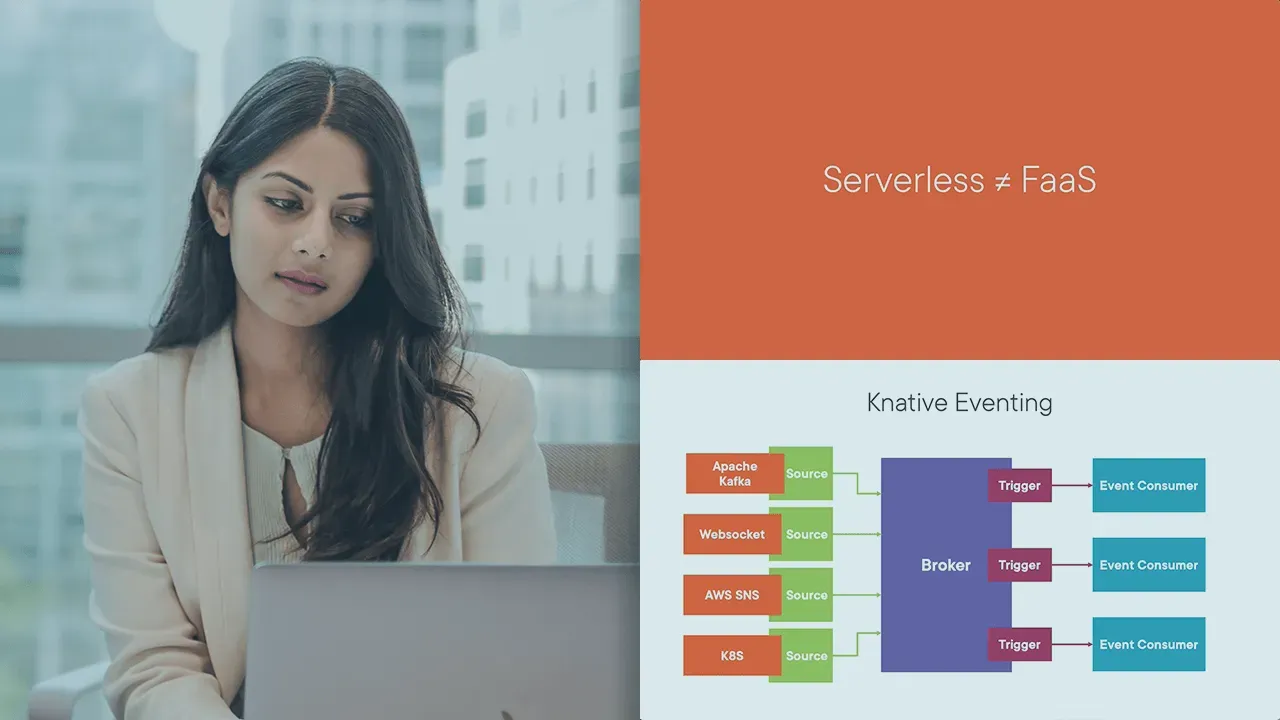
Getting Started with Knative

This course provides an introduction to Knative, a platform for deploying serverless applications. It covers the basics of Knative, including how to easily deploy applications, configure services, and scale them up or down. It also covers the benefits of using Knative, such as cost savings and improved scalability.▼
Course Feature
![]() Cost:
Cost:
Free Trial
![]() Provider:
Provider:
Pluralsight
![]() Certificate:
Certificate:
Paid Certification
![]() Language:
Language:
English
![]() Start Date:
Start Date:
On-Demand
Course Overview
❗The content presented here is sourced directly from Pluralsight platform. For comprehensive course details, including enrollment information, simply click on the 'Go to class' link on our website.
Updated in [March 06th, 2023]
In this course, Getting Started with Knative, learners will gain an understanding of the serverless model and how to deploy applications in a serverless environment. Learners will explore how to take advantage of the serverless model and how to deploy long-living serverless applications with Knative Serving. Additionally, learners will learn how to deploy event-driven applications with Knative Eventing. Upon completion of this course, learners will have the skills and knowledge of Knative needed to deploy serverless applications.
[Applications]
Upon completion of this course, learners can apply their knowledge of Knative to deploy serverless applications. They can use Knative Serving to deploy long-living serverless applications and Knative Eventing to deploy event-driven applications. Learners can also use Knative to take advantage of the serverless model and create applications that are more cost-effective and easier to maintain.
[Career Paths]
1. Cloud Architect: Cloud Architects are responsible for designing, building, and managing cloud-based systems. They must have a deep understanding of cloud computing technologies, such as Knative, and be able to develop and implement strategies for deploying applications in a serverless environment. As cloud computing continues to grow in popularity, the demand for Cloud Architects is expected to increase.
2. DevOps Engineer: DevOps Engineers are responsible for automating the development and deployment of applications. They must have a strong understanding of Knative and be able to develop and implement strategies for deploying applications in a serverless environment. As organizations continue to move towards a DevOps model, the demand for DevOps Engineers is expected to increase.
3. Serverless Developer: Serverless Developers are responsible for developing applications that run in a serverless environment. They must have a strong understanding of Knative and be able to develop and deploy applications in a serverless environment. As organizations continue to move towards a serverless model, the demand for Serverless Developers is expected to increase.
4. Cloud Security Engineer: Cloud Security Engineers are responsible for ensuring the security of cloud-based systems. They must have a deep understanding of cloud computing technologies, such as Knative, and be able to develop and implement strategies for securing applications in a serverless environment. As organizations continue to move towards a cloud-based model, the demand for Cloud Security Engineers is expected to increase.
[Education Paths]
1. Bachelor of Science in Computer Science: This degree path provides students with a comprehensive understanding of computer science principles and technologies. Students learn to design, develop, and maintain software applications, as well as develop algorithms and data structures. This degree path is becoming increasingly popular as the demand for software engineers continues to grow.
2. Bachelor of Science in Information Technology: This degree path focuses on the application of technology to solve business problems. Students learn to design, develop, and maintain information systems, as well as develop strategies for managing data and networks. This degree path is becoming increasingly popular as businesses rely more and more on technology to stay competitive.
3. Master of Science in Computer Science: This degree path provides students with an advanced understanding of computer science principles and technologies. Students learn to design, develop, and maintain software applications, as well as develop algorithms and data structures. This degree path is becoming increasingly popular as the demand for software engineers with advanced skills continues to grow.
4. Master of Science in Information Technology: This degree path focuses on the application of technology to solve business problems. Students learn to design, develop, and maintain information systems, as well as develop strategies for managing data and networks. This degree path is becoming increasingly popular as businesses rely more and more on technology to stay competitive and to stay ahead of the competition.
Course Provider






